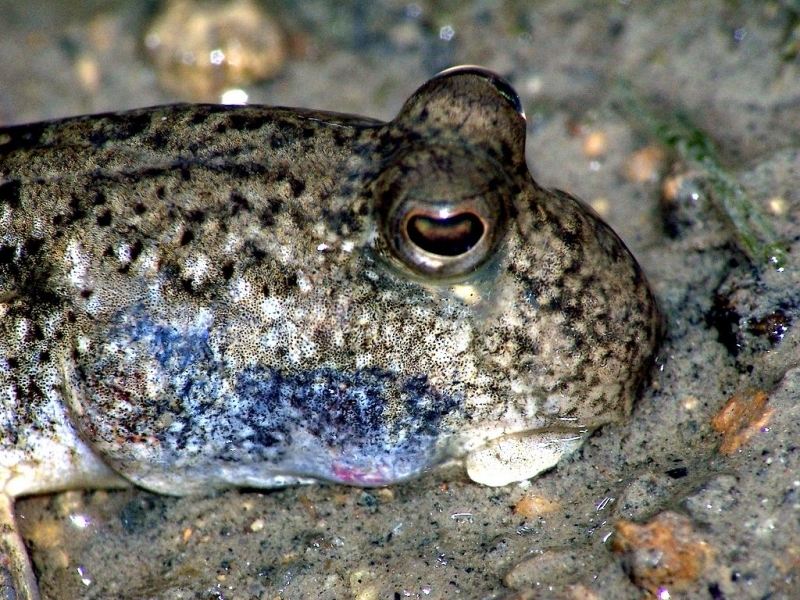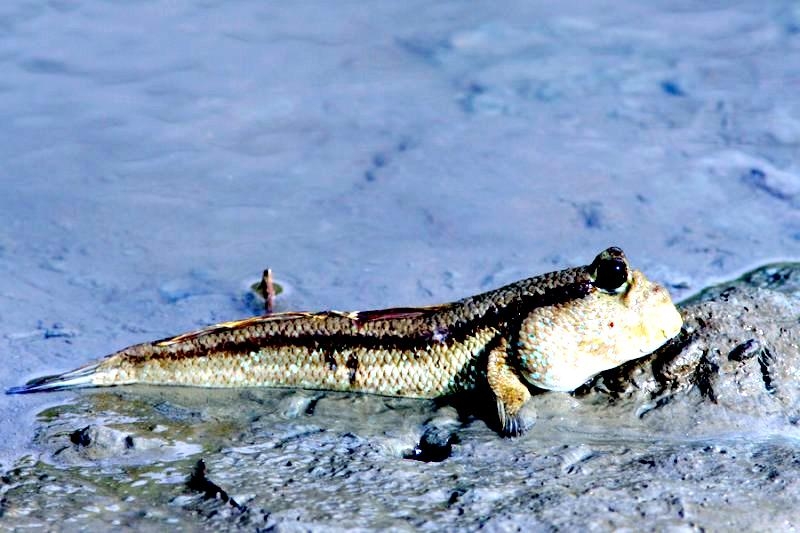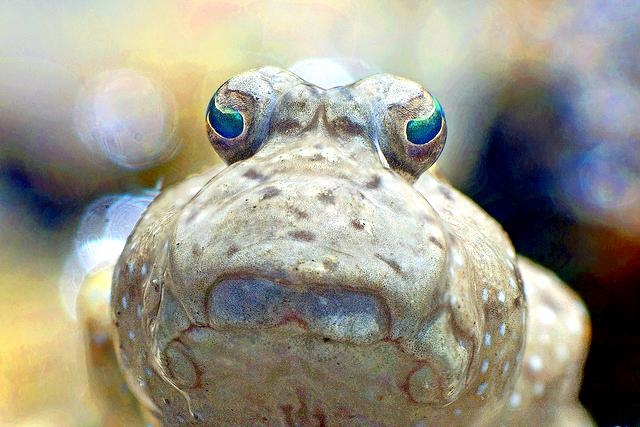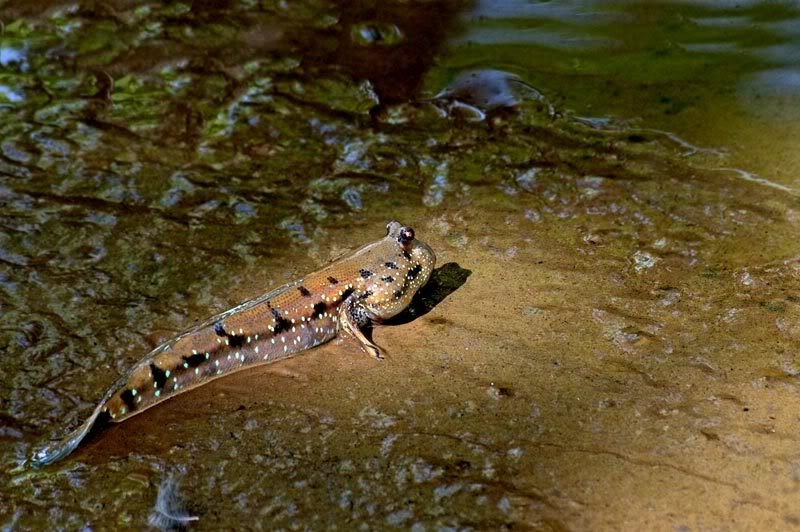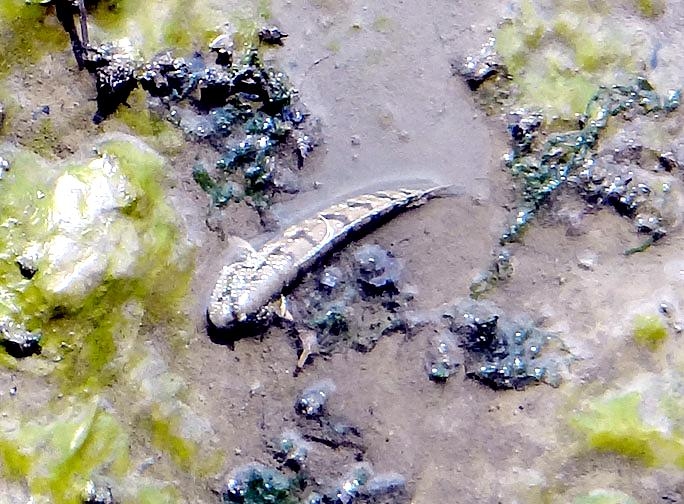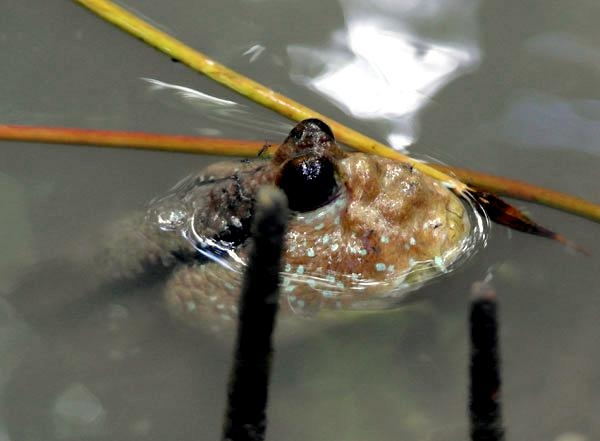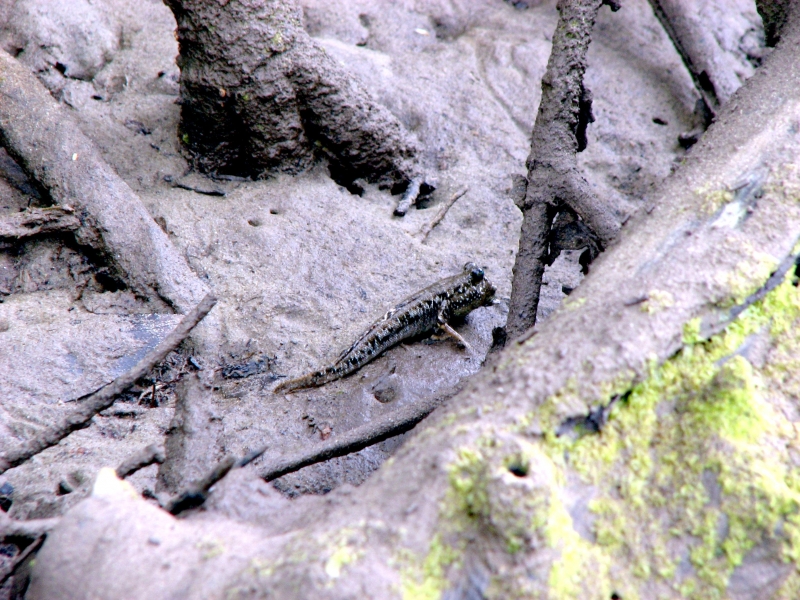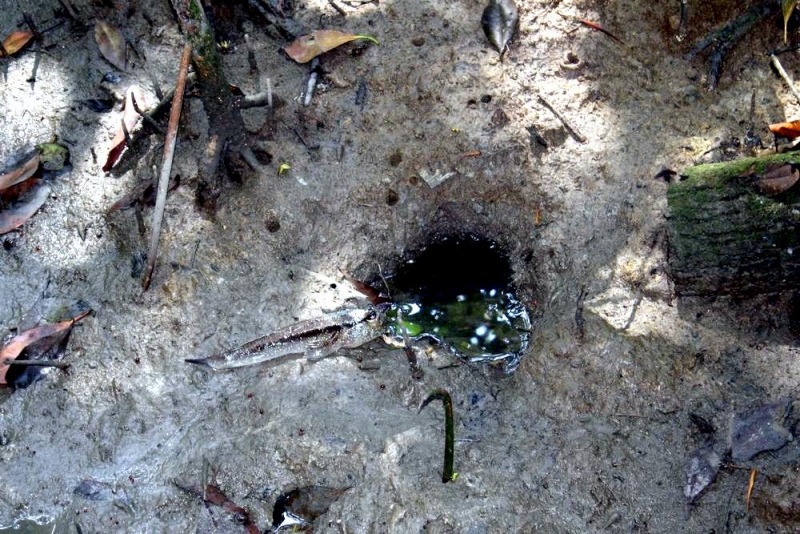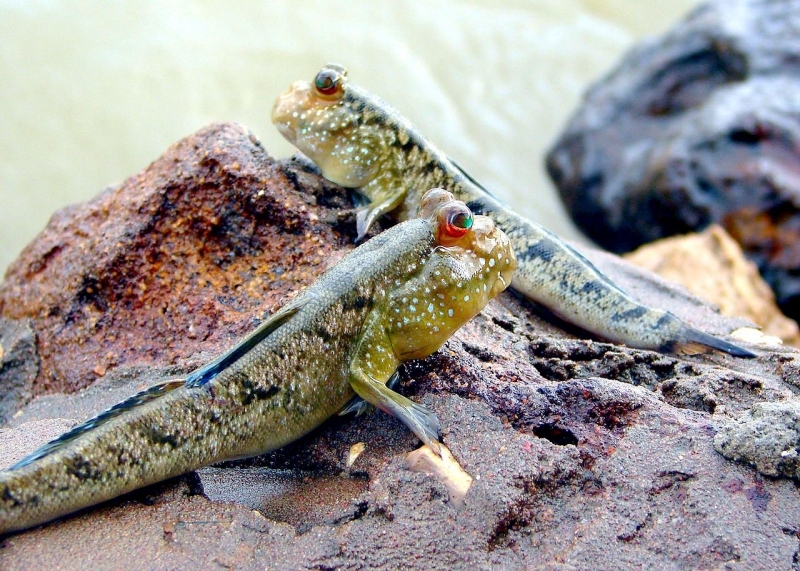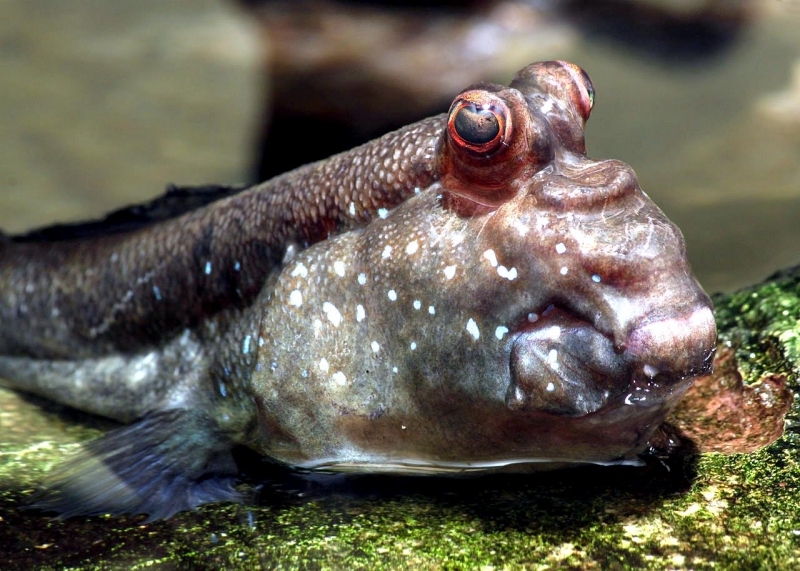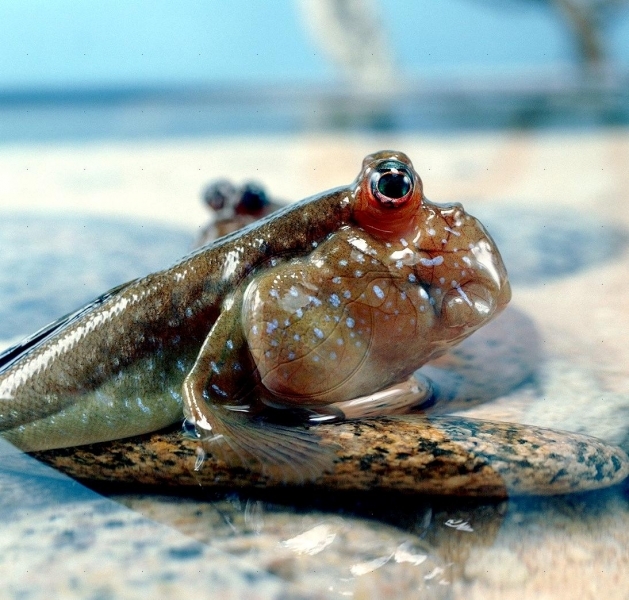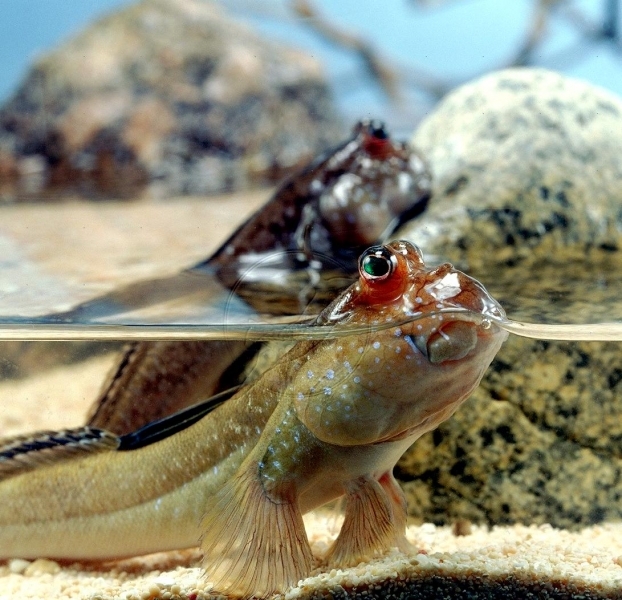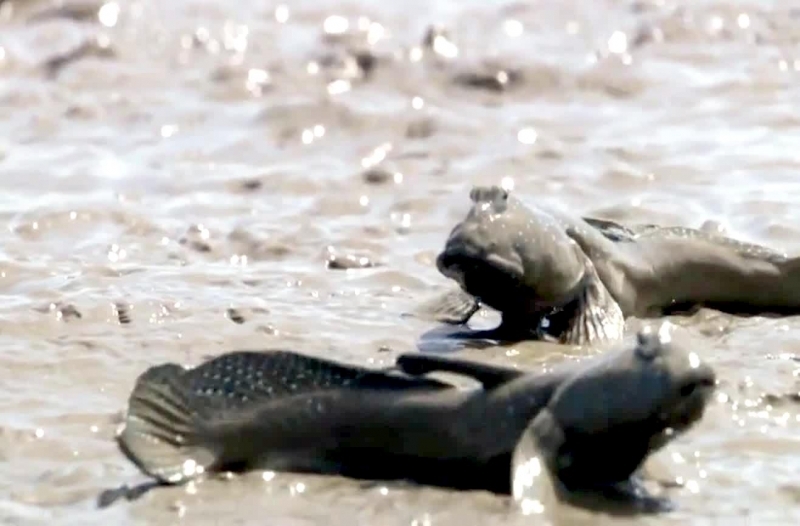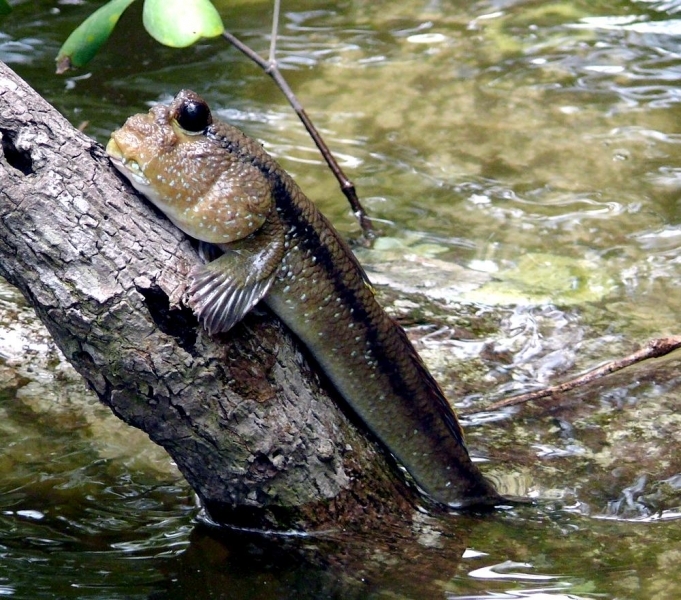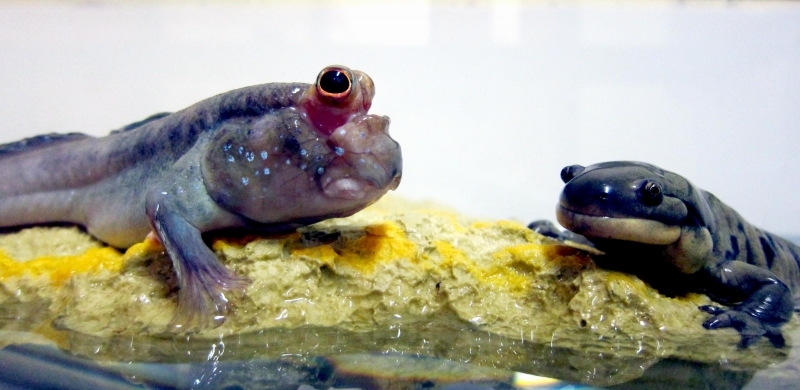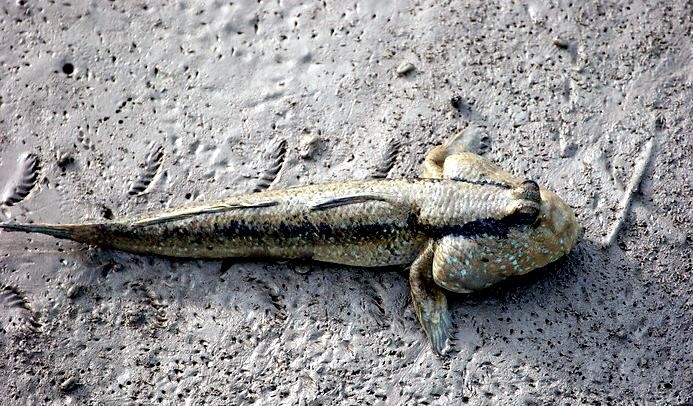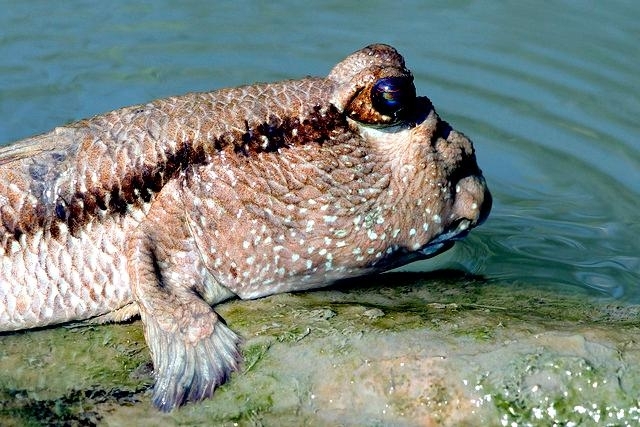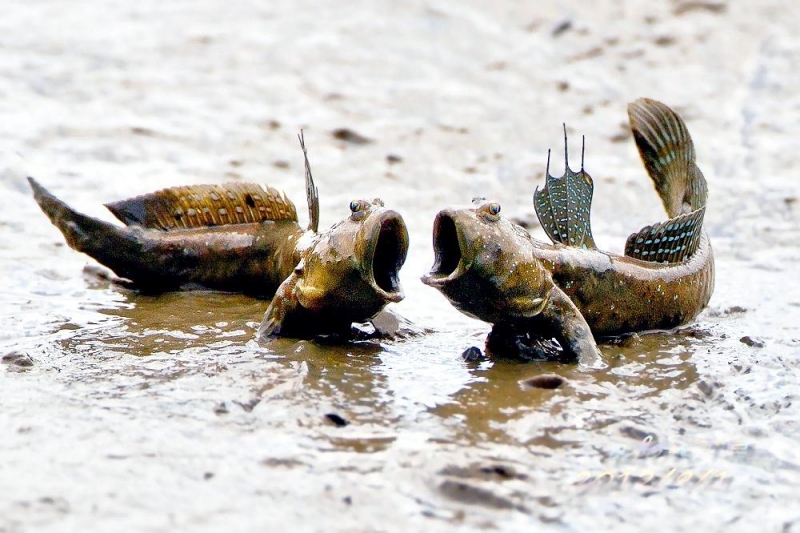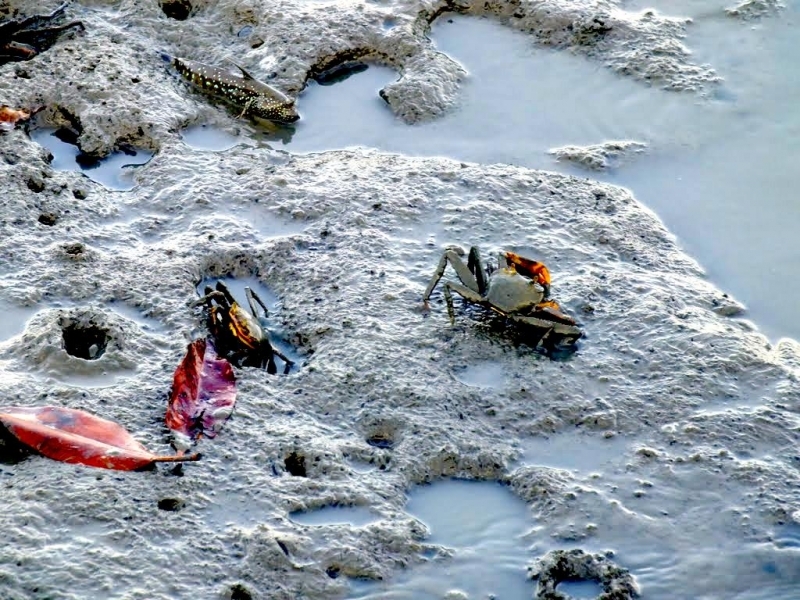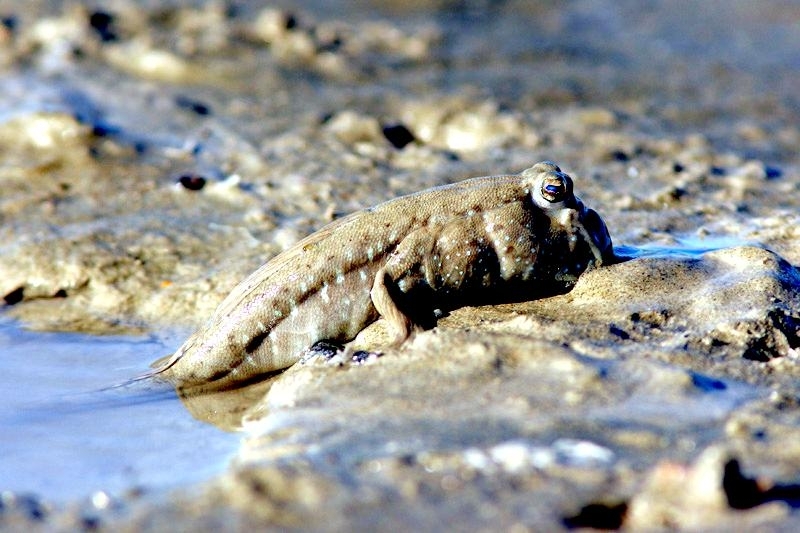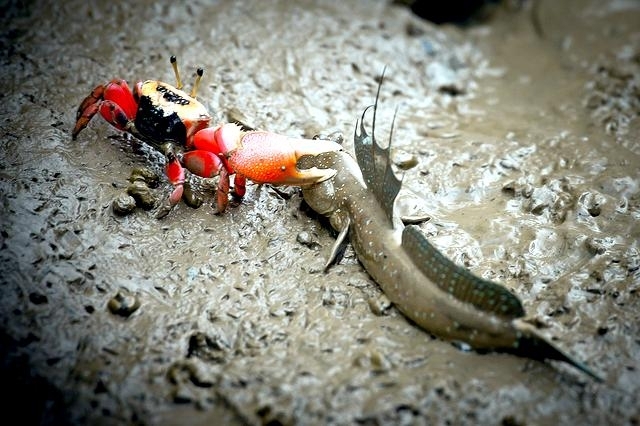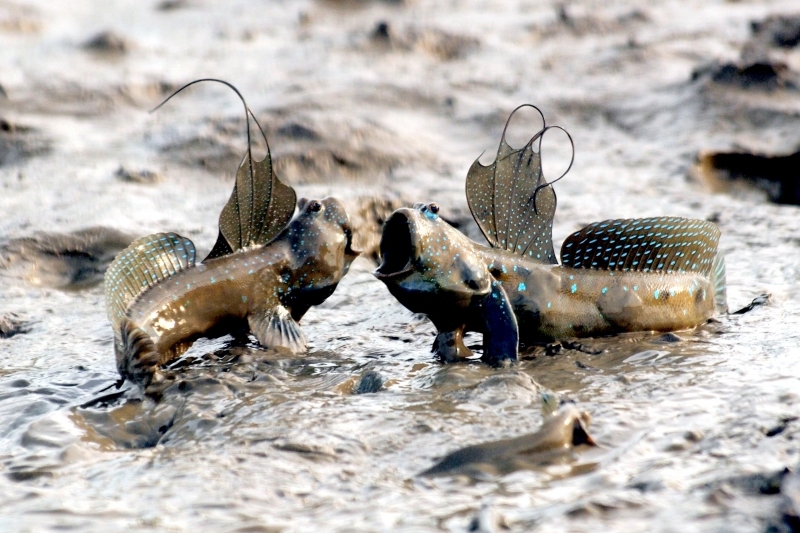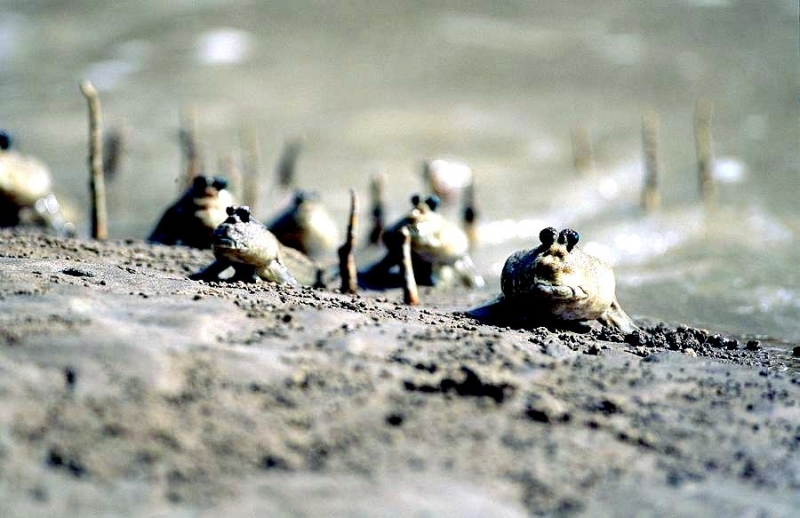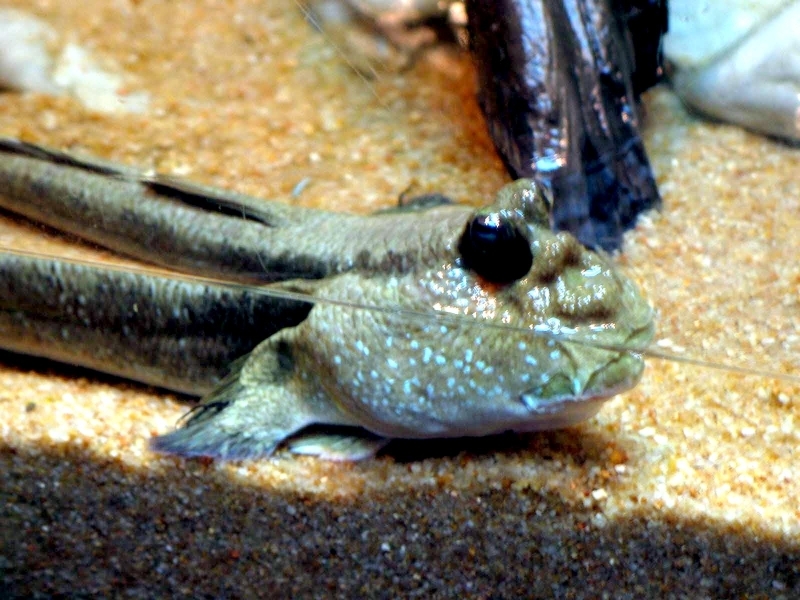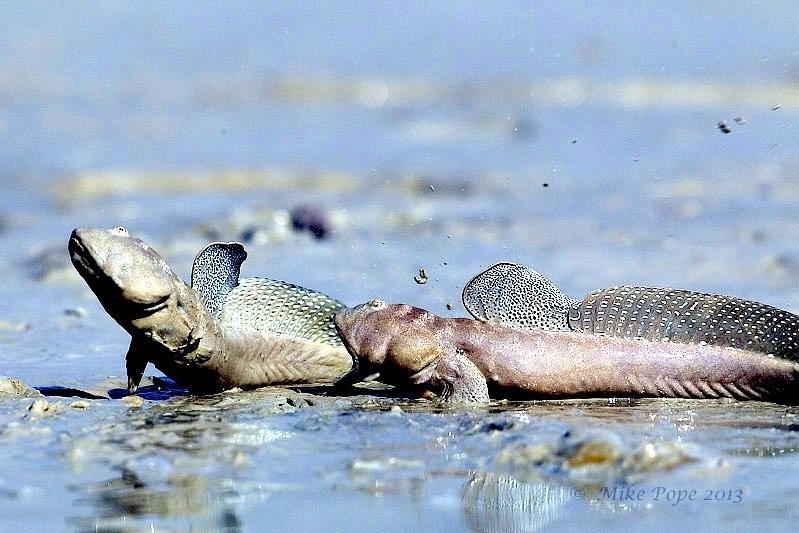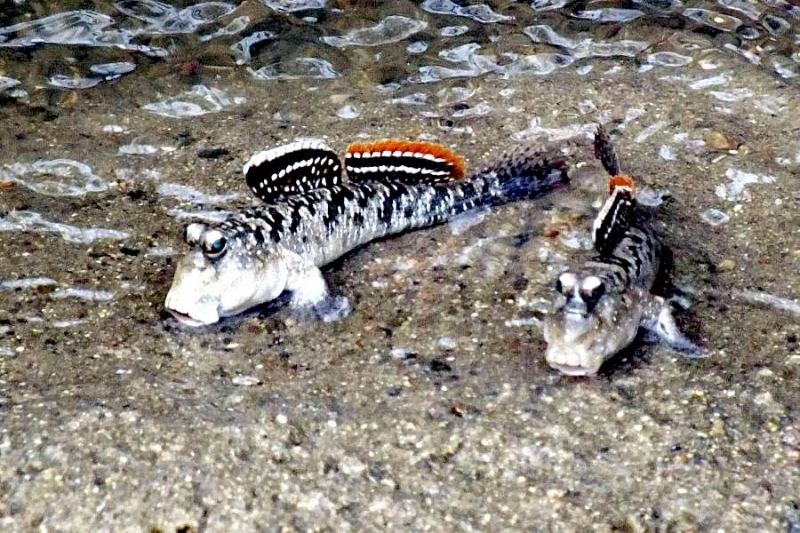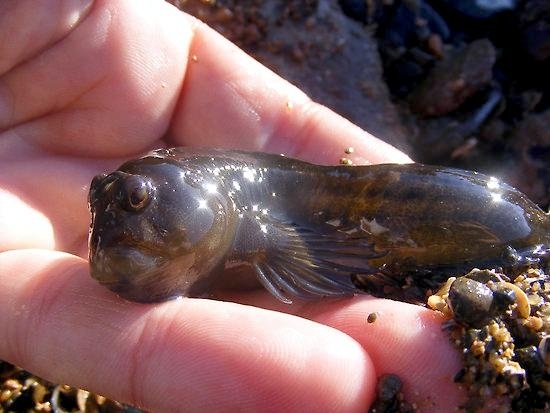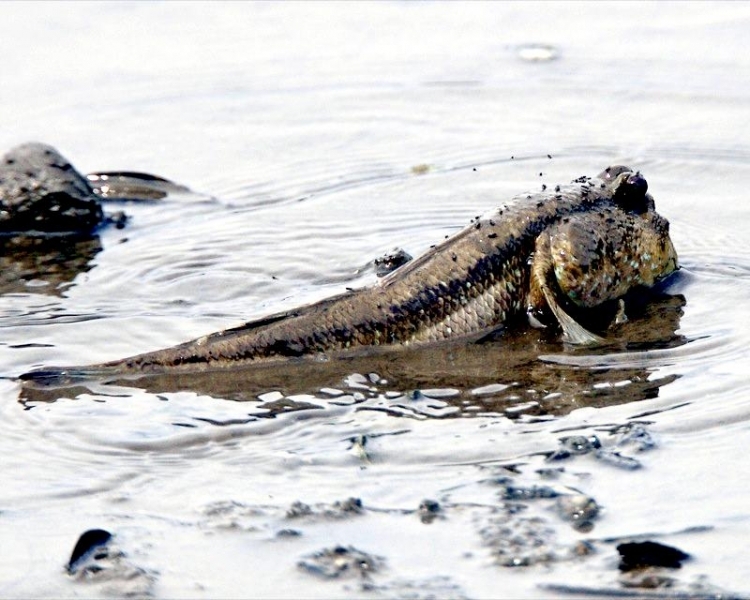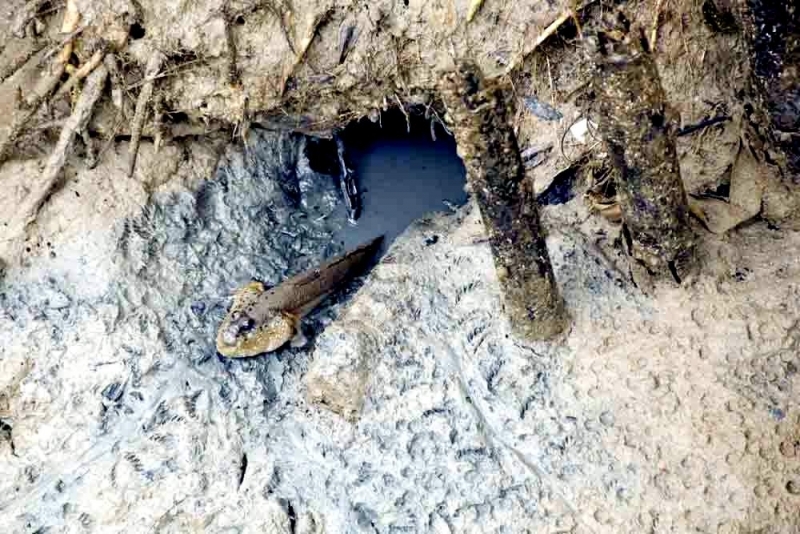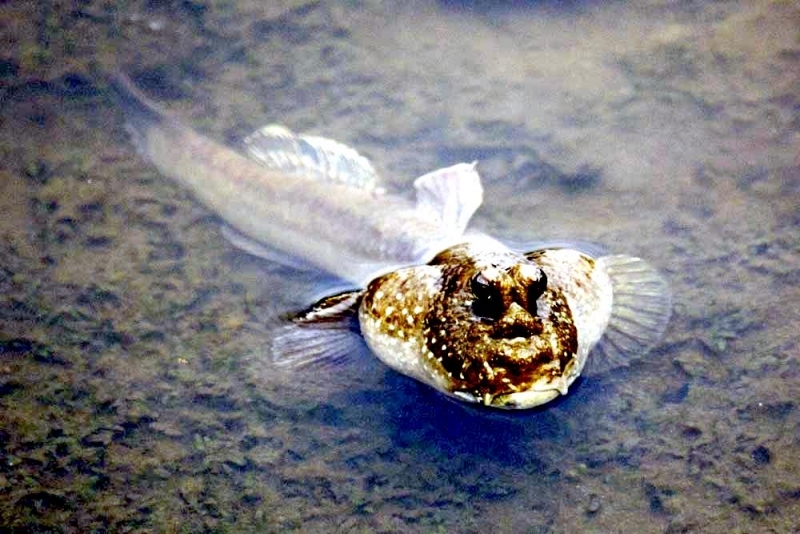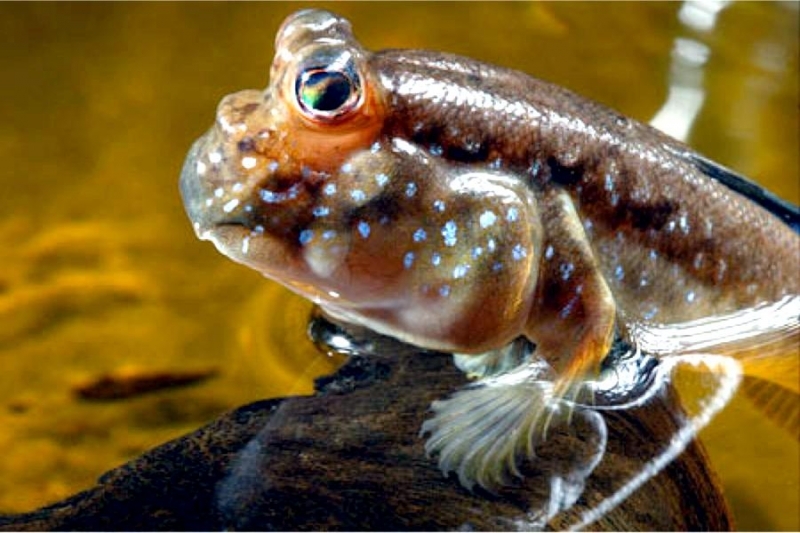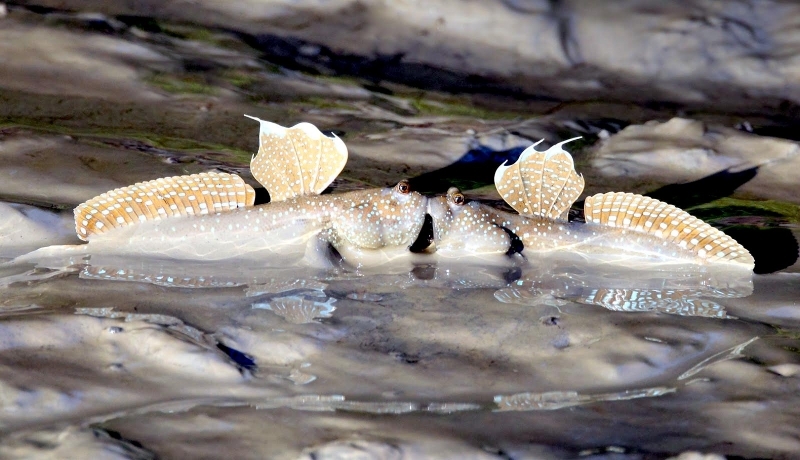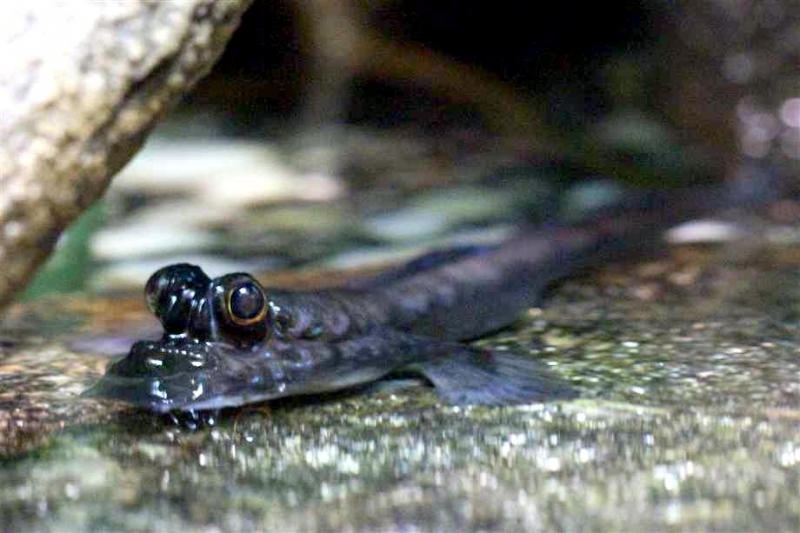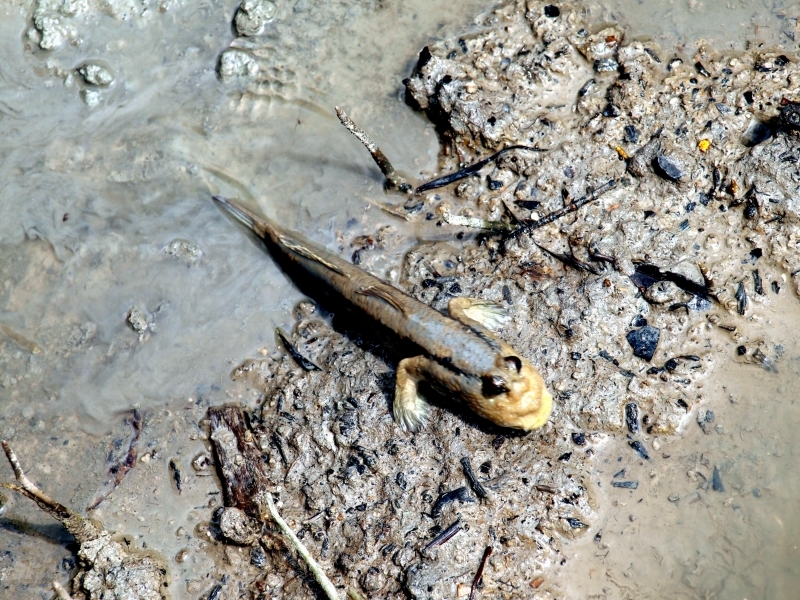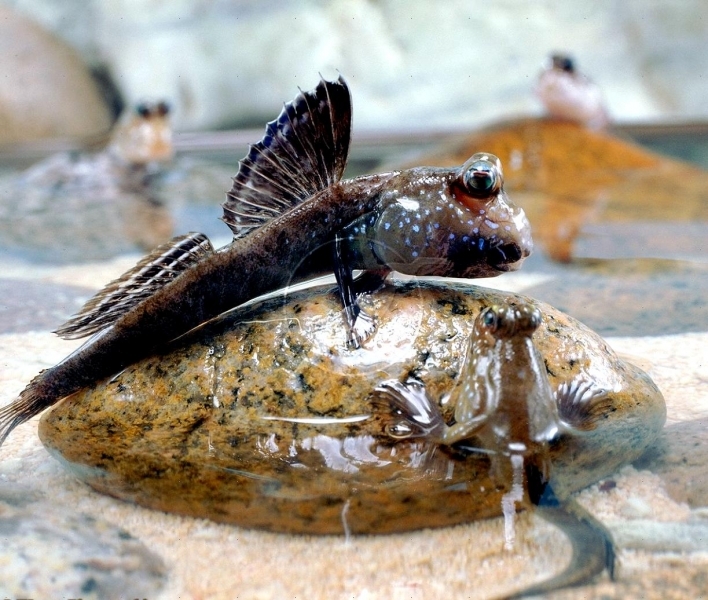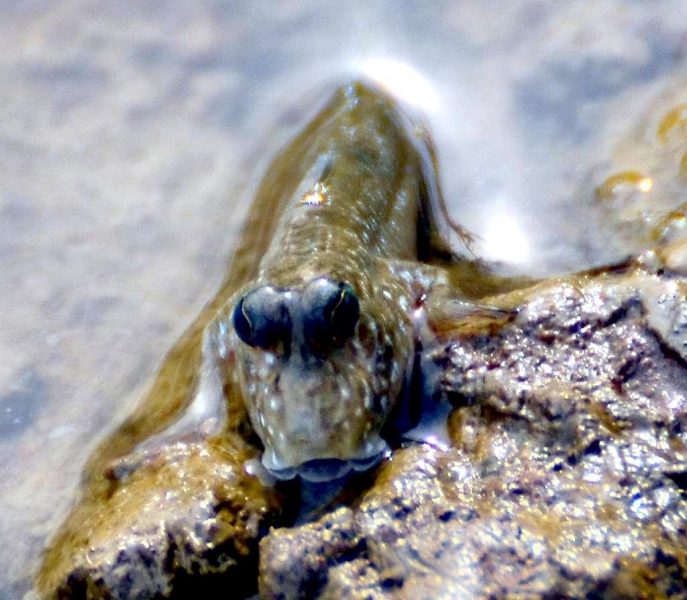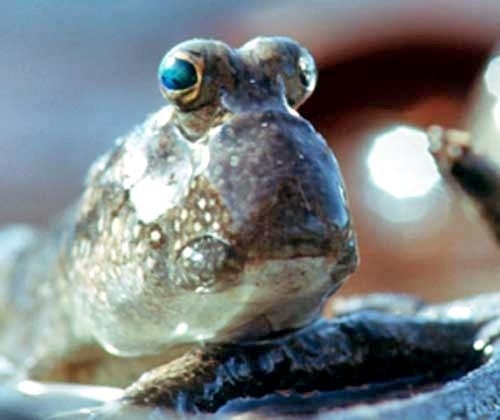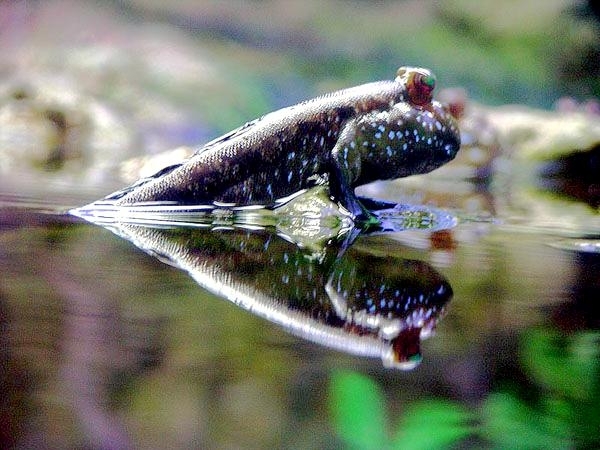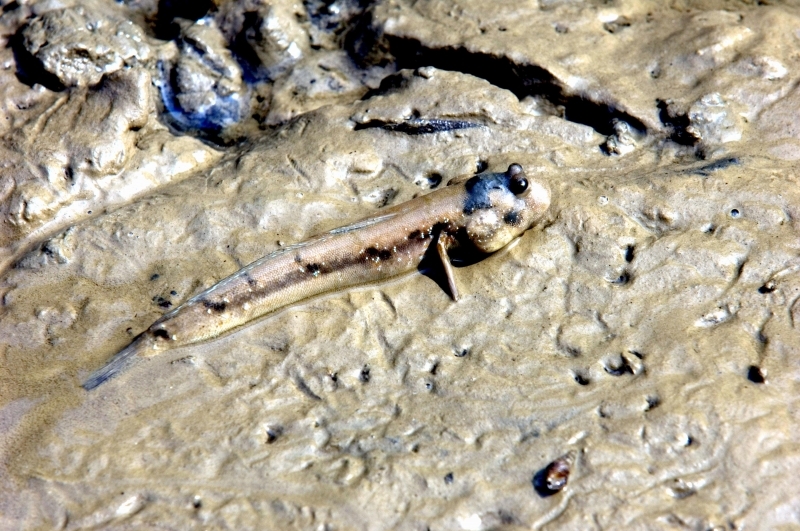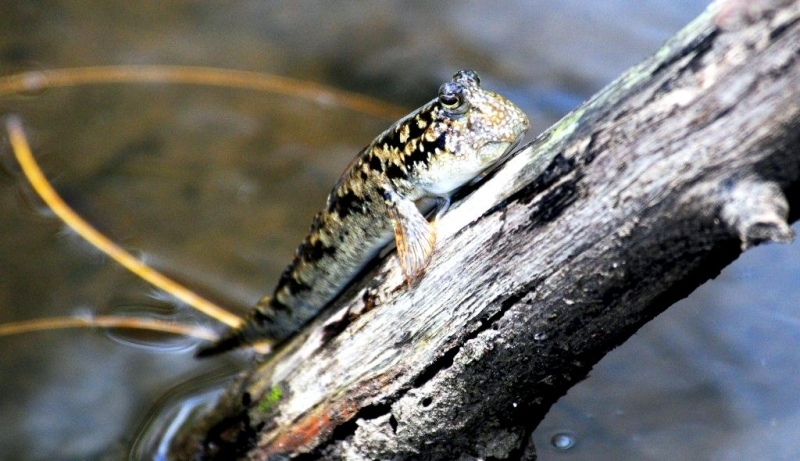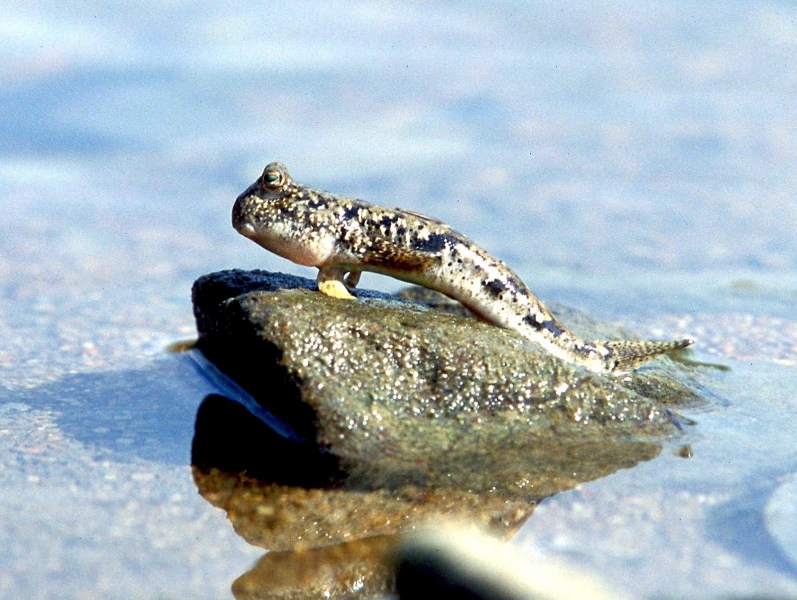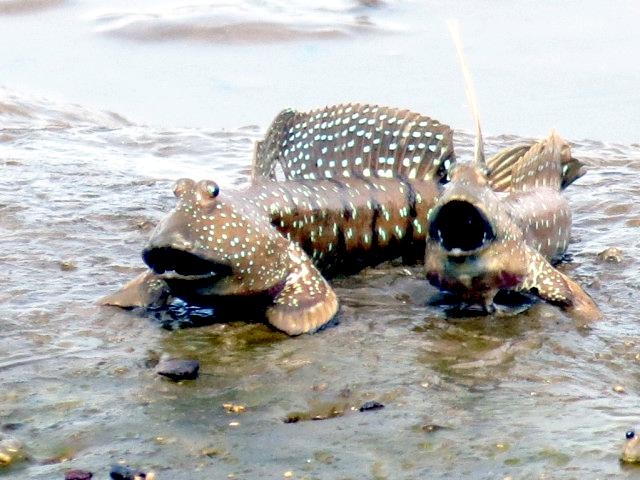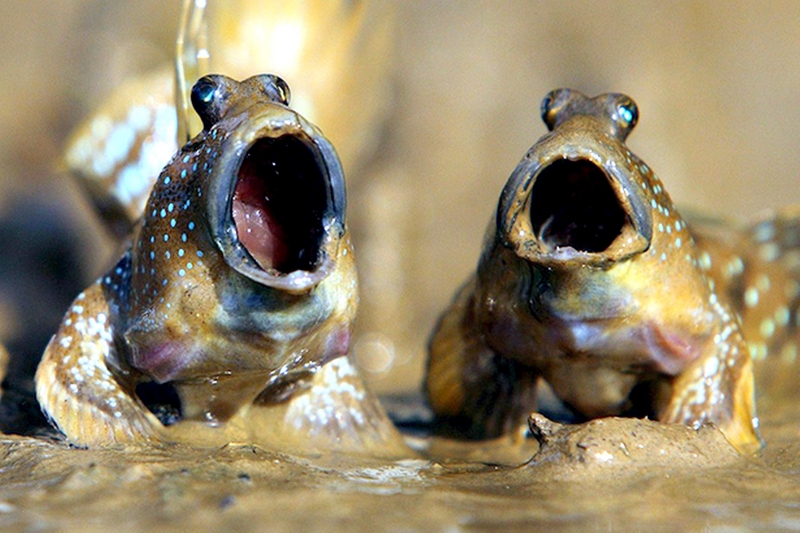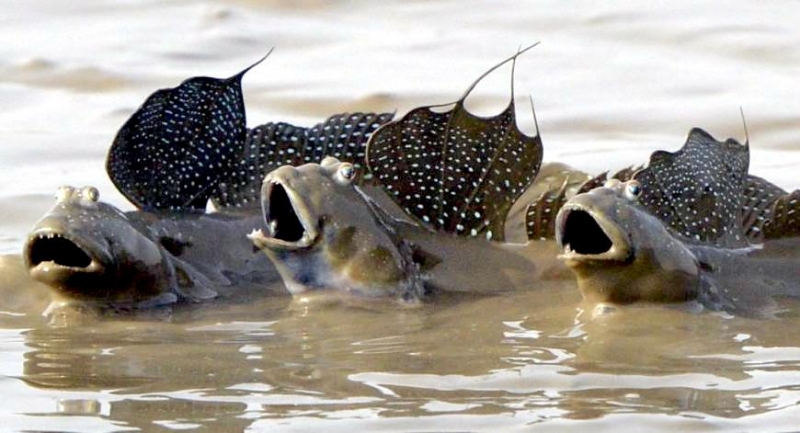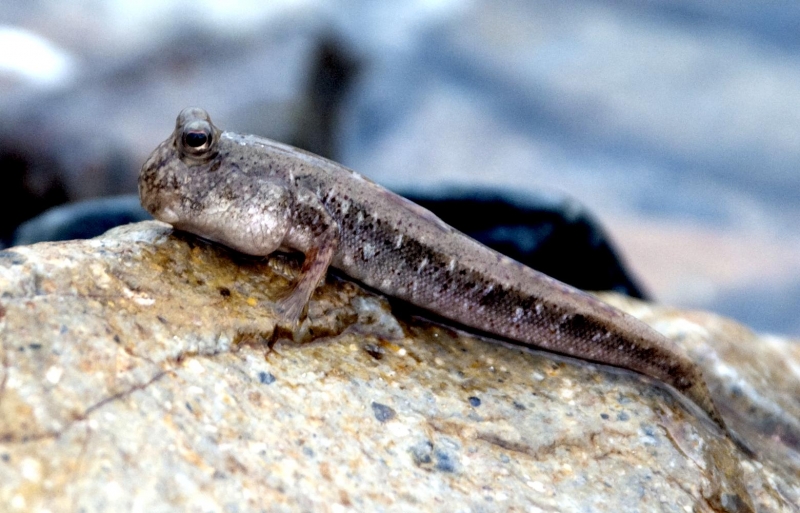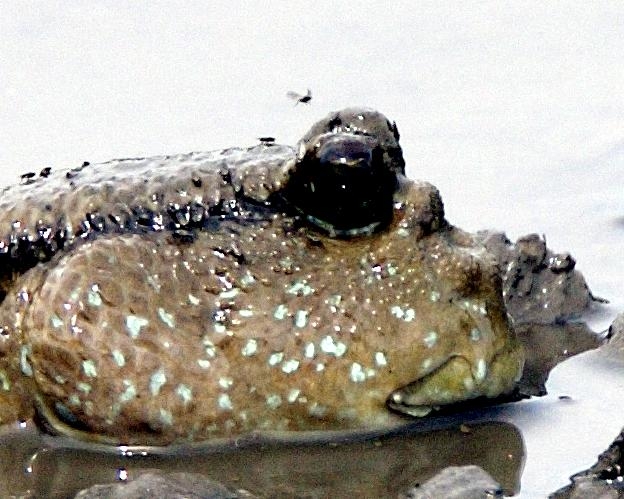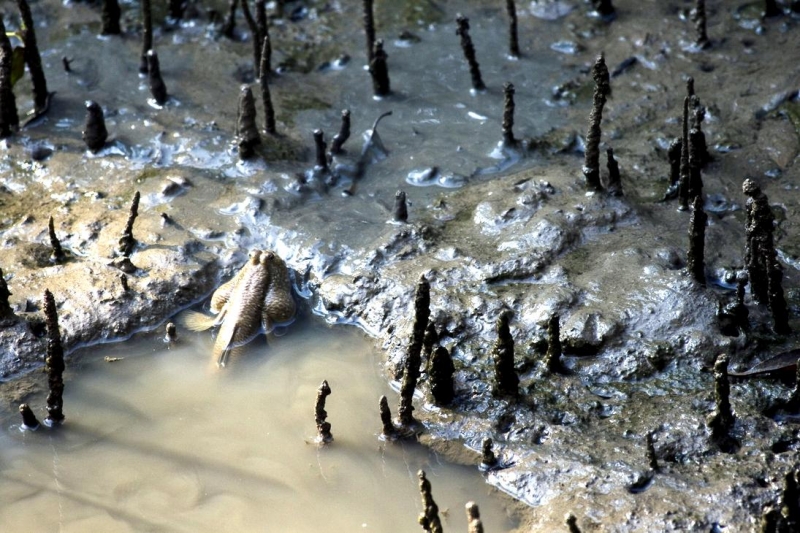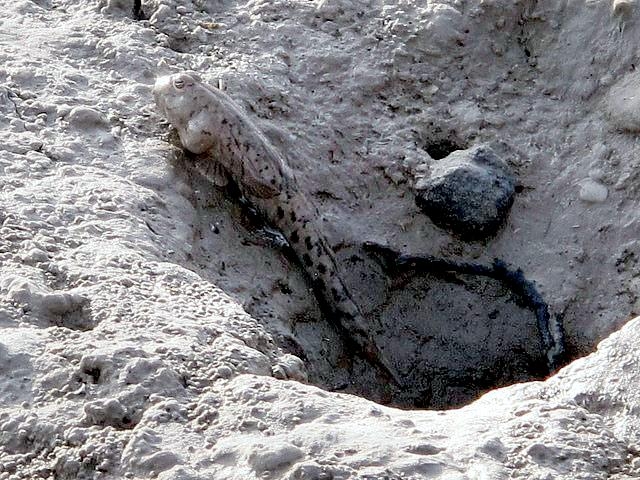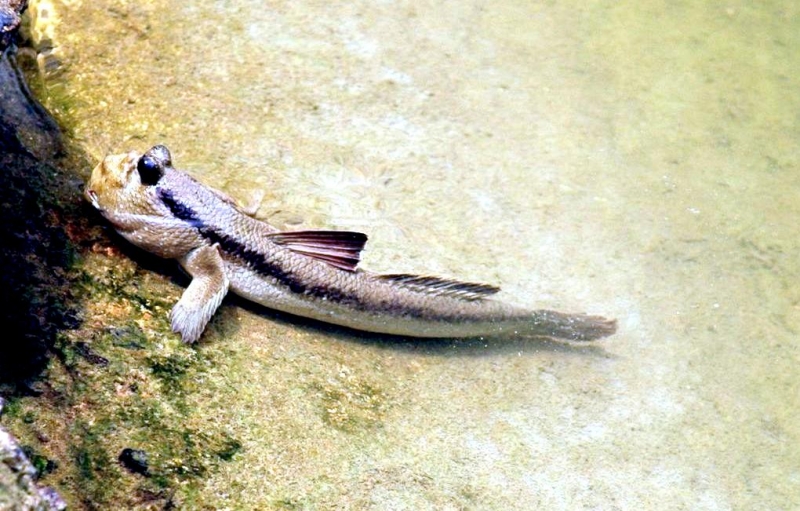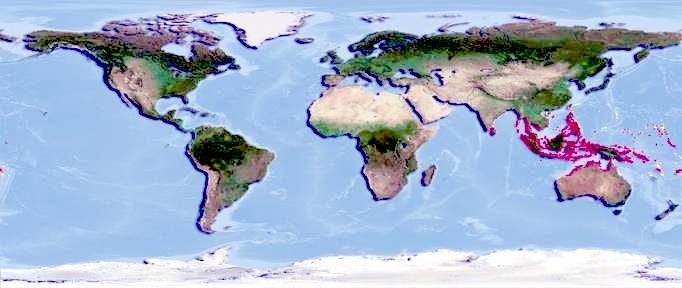“Periophthalmodon schlosseri”
Mudskippers are fish which spend more time on land than in water. In fact, a Mudskipper will drown if it’s never able to reach the water’s surface. Like other fish, Mudskippers breathe through gills but in addition they absorb oxygen through their skin and the linings of their mouths & throats. They are able to move over land by using their pectoral fins to pull themselves forward or they perform a series of skips or jumps. Mudskippers are found in muddy inter-tidal areas or swamps in a range of salinities. Most species live in tropical or subtropical regions, although a few inhabit temperate areas. Mudskippers have elongated, fish-like bodies and have fins like a fish, with dorsal fins on the back and a pectoral fin on each side. However, the pectoral fins are muscular, unlike those of other fish and the large, bulging eyes at the top of a Mudskipper’s head resemble a frog’s eyes rather than a fish’s. Their eyes are mobile & retractable. Each eye can move independently of the other one and has a wide field of view. Mudskippers can see almost 360 degrees around them and have excellent vision in air, but their vision in water is not so good. They have a sac filled with water beneath their eyes, known as a ”dermal cup”. When they are on land, the fish pull in their eyes periodically to moisten the eyes with the water in the sac, making the fish look like they are blinking. Many Mudskippers create underwater burrows, which they enter for protection from predatory fish during high tide or to lay their eggs. The water trapped in the burrows would normally have a very low oxygen content, but researchers have found that at least some Mudskipper species gulp air at the surface of the water, then release the air into their burrow creating an air pocket. Burrows that have been studied are J, U or V shaped. In some areas Mudskippers rest on a rock, root or other support at the water’s surface during high tide instead of hiding in a burrow. Mudskippers usually swim at the surface with their head out of the water. At low tide the fish emerge from their burrows and patrol the shore, looking for food. Most Mudskippers are carnivores and eat a wide variety of prey, including insects, algae, worms, crustaceans and sometimes smaller Mudskippers.
Mudskippers have several forms of movement. They can pull themselves around with their pectoral fins, which move at the same time instead of alternately as our legs do. This movement is known as “crutching” because it resembles a person using crutches to move. Mudskippers are also excellent skippers, jumpers and climbers. They flip their tails and bodies from side to side to propel themselves over the ground in a skipping motion. The pelvic or anal fins may be adapted to form a sucker-like structure which helps the fish climb. If gills dry out they stick together and are no longer able to absorb oxygen. When a Mudskipper comes on to land, it closes its gill chambers trapping water & air inside the chambers. The gills can therefore continue to function. The gill chambers expand for maximum oxygen absorption, often making the Mudskipper look like it has puffed-up cheeks. Like frogs, Mudskippers use cutaneous breathing (gas exchange through the skin and mouth lining). Their skin has to be damp for this to work, so Mudskippers need a humid environment to survive on land or have to periodically return to water or roll in mud to moisten themselves. The skin & mouth lining are richly supplied with capillaries for efficient gas exchange. Researchers still have a lot to learn about Mudskipper reproduction. What is true for one Mudskipper species may not be true for other species. Mudskippers have very specific requirements for mating & laying eggs and don’t yet reproduce in captivity. Courtship occurs on land. Males may change color during the mating season and some males develop a brightly colored throat which they display to rivals. Males raise & lower their dorsal fins during the breeding season when rivals approach. Mudskippers which are very territorial, also raise their fins in the non-breeding season as an aggressive display. To attract a female’s attention, the males wriggle their bodies, jump and spread their fins. The males stand on their tails and then flop on to their side during their mating display. When a male has attracted a female the pair enter the burrow to mate. Eggs are laid the burrow and attached to the walls or ceiling. The male may then chase the female out of the burrow and take care of the eggs on his own. Adult Mudskippers painstakingly aerate the egg chamber, collecting gulps of air from the surface and depositing them in the chamber to allow the eggs to develop.
